Quantitative Neurovascular Imaging Methods
Oral
Neuro
Monday, 18 June 2018
| S04 |
13:45 - 15:45 |
Moderators: John Detre, Sung-Hong Park |
13:45
|
0177.
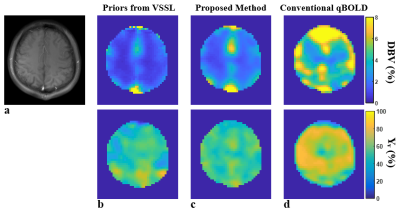 |
 Interleaved qBOLD: Combining Extravascular R2’ and Intravascular R2 Mapping for Improved Estimation of Brain Hemodynamic Parameters Interleaved qBOLD: Combining Extravascular R2’ and Intravascular R2 Mapping for Improved Estimation of Brain Hemodynamic Parameters
Hyunyeol Lee, Felix Wehrli
In qBOLD, the accuracy of local deoxygenated blood volume (DBV) and hemoglobin oxygen saturation (Yv) maps is impaired because of coupling of these two parameters in the signal model. Here, we introduce an interleaved qBOLD method that combines extravascular R2’ and intravascular R2 mapping in a single pulse sequence. Prior knowledge for DBV and Yv is obtained from the velocity-selective-spin-labeling module in the sequence, subsequently used as priors for qBOLD processing. Data obtained in eight subjects demonstrates significantly improved performance yielding plausible values averaging 60.1±3.3% for Yv and 3.1±0.5% and 2.0±0.4% for DBV in gray and white matter, respectively.
|
13:57
 |
0178.
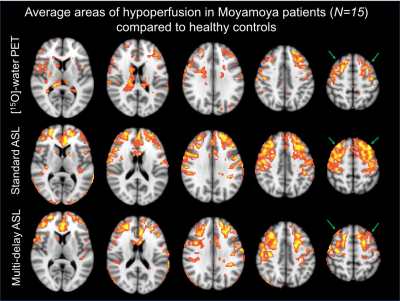 |
 Multi-delay arterial spin labeling (ASL) more accurately detects hypoperfusion in Moyamoya disease: comparison with a normative PET/MRI database Multi-delay arterial spin labeling (ASL) more accurately detects hypoperfusion in Moyamoya disease: comparison with a normative PET/MRI database
Audrey Fan, Mohammad Khalighi, Jia Guo, Yosuke Ishii, Mirwais Wardak, Jun-Hyung Park, Bin Shen, Dawn Holley, Harsh Gandhi, Prachi Singh, Tom Haywood, Gary Steinberg, Frederick Chin, Greg Zaharchuk
We directly compared multi-delay arterial spin labeling (ASL) and standard ASL measurements of cerebral blood flow (CBF) to simultaneously acquired [15O]-PET scans on hybrid PET/MRI in Moyamoya disease. For these Moyamoya patients (N=15) with extremely long arterial transit times, multi-delay ASL outperforms standard ASL in regional correlation and reduces bias relative to PET. We also constructed a voxelwise, normative CBF database based on healthy controls (N=15) with PET/MRI, and identified regions of hypoperfusion in frontal and parietal regions of patients. Multi-delay ASL is more specific to areas of Moyamoya hypoperfusion (more similar to PET), whereas standard ASL overestimates these areas due to low signal.
|
14:09
 |
0179.
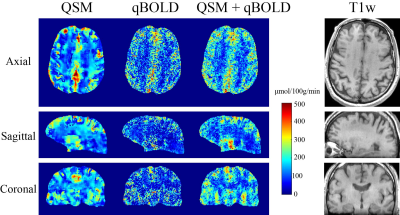 |
 Cerebral Metabolic Rate of Oxygen (CMRO2) mapping by a joint model of quantitative susceptibility mapping (QSM)-based method and quantitative BOLD (qBOLD) Cerebral Metabolic Rate of Oxygen (CMRO2) mapping by a joint model of quantitative susceptibility mapping (QSM)-based method and quantitative BOLD (qBOLD)
Junghun Cho, Youngwook Kee, Pascal Spincemaille, Thanh Nguyen, Jingwei Zhang, Ajay Gupta, Shun Zhang, Yi Wang
In this work, we propose a gradient echo (GRE) based measurement of oxygen extraction fraction (OEF) based on a simultaneous modeling of the magnitude (using quantitative BOLD corrected for non-blood tissue susceptibility) and phase (based on QSM), without additional vascular challenges and empirical assumptions. Compared to methods based on QSM only and on qBOLD only, the proposed model provided better CMRO2 contrast between gray and white matter, and more uniform OEF in healthy subjects.
|
14:21
|
0180.
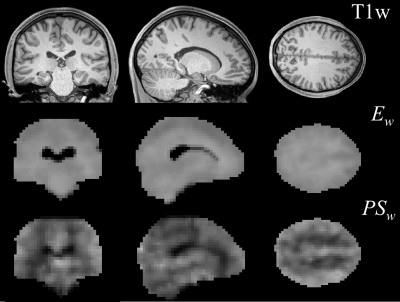 |
 3D MRI Mapping of Whole-Brain Water Permeability with Intrinsic Diffusivity Encoding of Arterial Labeled Spins (IDEALS) 3D MRI Mapping of Whole-Brain Water Permeability with Intrinsic Diffusivity Encoding of Arterial Labeled Spins (IDEALS)
Xiang He, Kenneth Wengler, Tim Duong, Mark Schweitzer
Breakdown of the blood-brain barrier has been hypothesized as a key mechanism leading to neuronal dysfunction that underlies many neurological and psychiatric diseases. Compared with exogenous contrast agents, trans-capillary water permeability may provide a more direct and sensitive assessment of BBB integrity at disease onset and progression. While the current gold standard approach to measure water permeability is O15-H2O PET, its widespread use is limited by availability and cost. Here, we propose a novel MRI-based method, IDEALS, to non-invasively map BBB water permeability with high sensitivity and whole-brain coverage. This method was applied in healthy participants and brain tumor patients.
|
14:33
 |
0181.
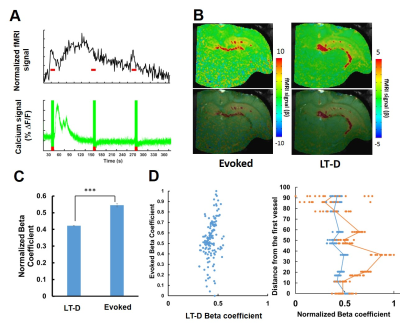 |
 Identify the neurovascular coupling efficacy of long-term depolarization or seizer-like events in the hippocampus with optogenetic single-vessel fMRI Identify the neurovascular coupling efficacy of long-term depolarization or seizer-like events in the hippocampus with optogenetic single-vessel fMRI
Xuming Chen, Filip Sobczak, Yi Chen, Xin Yu
Optogenetic activation can elicit seizure-like events in the hippocampus of anesthetized rats. However, it remains unclear how the hemodynamic signaling responds to the seizure-like events or long-term depolarization in hippocampus. Here, we applied the multi-model fMRI platform to acquire concurrent single-vessel fMRI and calcium signal upon optogenetic stimulation in the hippocampus. The neurovascular coupling coefficient was significantly lower for the long-term depolarization/seizure-like calcium event than that of normally evoked events. The reduced neurovascular coupling efficacy during seizure-like events indicates the lack of sufficient blood supply under high-energy demand of long-term depolarization, and eventually causes tissue damage.
|
14:45
|
0182.
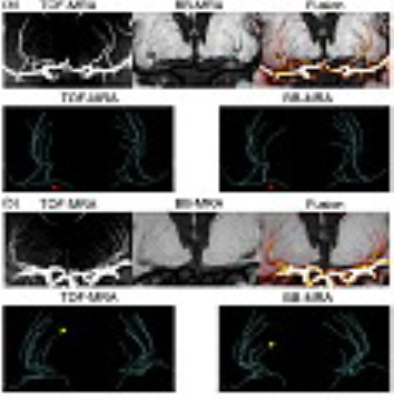 |
 Black-blood angiography of the lenticulostriate artery at 3T using a high-resolution intracranial vessel wall MR technique: a comparison validation with 7T TOF-MRA Black-blood angiography of the lenticulostriate artery at 3T using a high-resolution intracranial vessel wall MR technique: a comparison validation with 7T TOF-MRA
Zihao Zhang, Zhaoyang Fan, Qingle Kong, Jing An, Yan Zhuo, Qi Yang
The lenticulostriate artery (LSA) supplies blood to the basal ganglia and its vicinity. Noninvasive imaging of the LSA could be clinically useful to understand mechanisms of microvascular pathology or guide early therapeutic intervention. In this study, we used a recently developed high-resolution intracranial vessel wall MR imaging technique to visualize the LSA in a black-blood (BB) fashion at 3T. Compared to 7T TOF-MRA, this approach can depict the LSA, particularly the stems and proximal segments, with comparable image quality.
|
14:57
 |
0183.
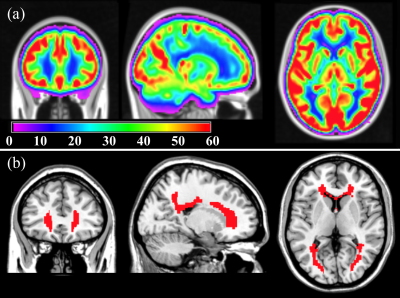 |
 Periventricular cerebral blood flow: A biomarker for small vessel ischemia Periventricular cerebral blood flow: A biomarker for small vessel ischemia
Sudipto Dolui, Marta Vidorreta, David Wolk, John Detre
We evaluated periventricular white matter (PVWM) cerebral blood flow (CBF) as a mechanistically specific biomarker for small vessel ischemia and demonstrated the feasibility of its measurement using state-of-the-art arterial spin labeling. We constructed the PVWM region of interest and demonstrated that mean CBF in PVWM had higher correlation with lesion volumes than global, grey matter, or white matter CBF, even after correction for global CBF, age, and sex. PVWM CBF also showed higher correlation with Trail A and B processing speed than CBF in other regions, or lesion volumes.
|
15:09
 |
0184.
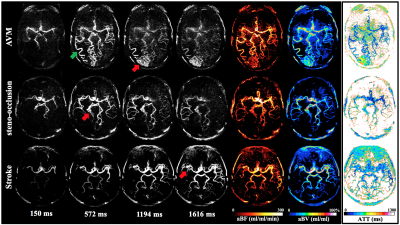 |
 Quantification of flow hemodynamics using non-contrast enhanced 4-dimensional dynamic magnetic resonance angiography Quantification of flow hemodynamics using non-contrast enhanced 4-dimensional dynamic magnetic resonance angiography
Xingfeng Shao, Danny J.J. Wang, Lirong Yan
Arterial spin labeling (ASL)-based non-contrast enhanced dynamic MR angiography (NCE-dMRA) can provide not only dynamic flow depiction but also quantitative hemodynamics. According to the indicator dilution theory, we proposed a novel analytical solution for arterial blood flow (aBF) quantification in NCE-dMRA. Compared to the previous truncated singular value decomposition (t-SVD), reliable aBF measures were obtained using the proposed method from both simulation and experimental data. Hemodynamic maps including aBF, arterial blood volume and arterial transit time were successfully generated. Our preliminary patient data suggest that the dynamic flow patterns in conjunction with quantitative hemodynamic may provide complementary information for clinical diagnosis.
|
15:21
|
0185.
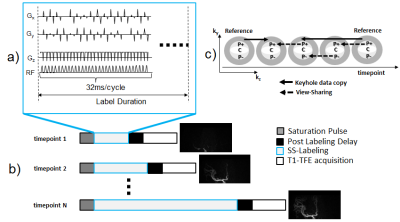 |
 Investigation of Intracranial Artery Selective Visualization in Superselective 4D-MR Angiography with Pseudo-Continuous Arterial Spin Labeling Combined with CENTRA-Keyhole and View-sharing (SS-4D-PACK) Investigation of Intracranial Artery Selective Visualization in Superselective 4D-MR Angiography with Pseudo-Continuous Arterial Spin Labeling Combined with CENTRA-Keyhole and View-sharing (SS-4D-PACK)
Makoto Obara, Osamu Togao, Helle Michael, Tetsuhiro Wada, Hiroo Murazaki, Masami Yoneyama, Yuta Akamine, Marc Van Cauteren
Four dimensional (4D) MR Angiography with Pseudo-Continuous Arterial Spin Labeling (pCASL) combined with CENTRA-Keyhole and View-sharing (4D-PACK) has demonstrated high flow visualization ability in clinical use. In this study, we combined Superselective-pCASL with 4D-PACK (SS-4D-PACK) and investigated artery-selective visualization ability in SS-4D-PACK through comparison with contrast inherent inflow enhanced multi-phase angiography combining vessel-selective arterial spin labeling technique (CINEMA-Select). SS-4D-PACK showed higher vessel selectivity and vessel visualization in peripheral artery compared with CINEMA-Select.
|
15:33
 |
0186.
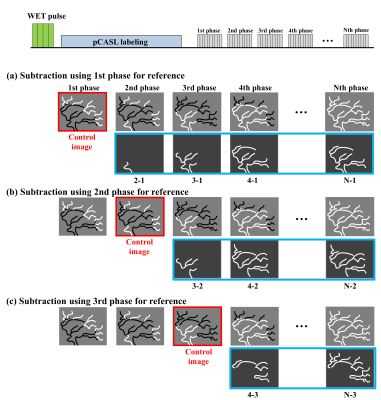 |
 Acceleration of Vessel-Selective 4D MR Angiography by pCASL in combination with Acquisition of Control and Labeled Images in the Same Shot (ACTRESS) Acceleration of Vessel-Selective 4D MR Angiography by pCASL in combination with Acquisition of Control and Labeled Images in the Same Shot (ACTRESS)
Yuriko Suzuki, Thomas Okell, Matthias van Osch
In the last decade, MR dynamic angiography (4D-MRA) using arterial spin labeling has become an important alternative to contrast-enhanced 4D-MRA, although scan-time is usually much longer than contrast-enhanced 4D-MRA. Among other advantages, it has the attractive possibility to allow for vessel-selective visualization. In this study, we propose an adaptation of ACTRESS (Acquisition of ConTRol and labeled Images in the Same Shot) approach for pCASL to enable vessel-selective 4D-MRA with almost halved scan-time. In an in-vivo study, it was shown that pCASL-ACTRESS approach provided vessel-selective 4D-MRA with comparable image quality to a conventional pCASL-approach, but acquired in approximately half the scan-time.
|
|













